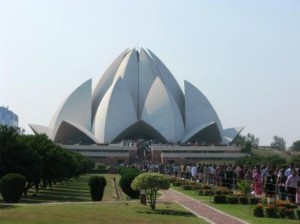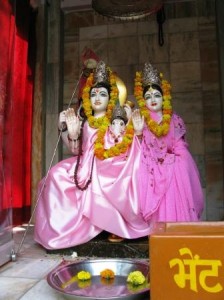 New Delhi, the capital of India is perhaps the only city in the world where a vast number of different religions coexist with much harmony. The population of India is majority Hindu, but also includes a good number of Muslims, Sikhs, Christians, Buddhists, Jains, Jews and Zoroastrians. If you want to visit all their places of worship and see how they differ in their preachings, theology, rituals and architecture, plan a visit to Delhi where all of these religions have managed to represent themselves fairly well.
New Delhi, the capital of India is perhaps the only city in the world where a vast number of different religions coexist with much harmony. The population of India is majority Hindu, but also includes a good number of Muslims, Sikhs, Christians, Buddhists, Jains, Jews and Zoroastrians. If you want to visit all their places of worship and see how they differ in their preachings, theology, rituals and architecture, plan a visit to Delhi where all of these religions have managed to represent themselves fairly well.
The Lotus temple built 25 years ago is perhaps the only one of it’s kind. It is a giant structure shaped in the form of a lotus, placed in a pond of blue water and surrounded by manicured gardens. Started 150 years ago by Bahá’u’lláh, the Bahai Faith believes in equality of mankind and one God. It’s teachings are more spiritually than religion inclined, catering to new age believers around the world.
 Hindu temples feature various God’s and Goddesses, each of who stand for a particular virtue. Hindu’s worship the respective temples based on what they are seeking at the time. There are also some temples that are all encompassing with deities of a number of the God’s. Laxshmi is the goddess of wealth, Saraswati, the goddess of knowledge, Shiva symbolizes fertility, Krishna love and prosperity. Finally Ram and Sita are the main idols and you will always find their statues in the middle of the temple. The Hanuman temple in New Delhi is perhaps one of the most frequently visited. Built in 1540, it boasts a tall statue of the Lord Hanuman (monkey God) and is one of the five temples of Mahabharata days. An important feature of the worship at this temple is the 24–hour chanting of the mantra (hymn) “Sri Ram, Jai Ram, Jai Jai Ram”, since August 1, 1964. It is claimed that this continuous chanting has been recorded in the Guinness Book of World Records.
Hindu temples feature various God’s and Goddesses, each of who stand for a particular virtue. Hindu’s worship the respective temples based on what they are seeking at the time. There are also some temples that are all encompassing with deities of a number of the God’s. Laxshmi is the goddess of wealth, Saraswati, the goddess of knowledge, Shiva symbolizes fertility, Krishna love and prosperity. Finally Ram and Sita are the main idols and you will always find their statues in the middle of the temple. The Hanuman temple in New Delhi is perhaps one of the most frequently visited. Built in 1540, it boasts a tall statue of the Lord Hanuman (monkey God) and is one of the five temples of Mahabharata days. An important feature of the worship at this temple is the 24–hour chanting of the mantra (hymn) “Sri Ram, Jai Ram, Jai Jai Ram”, since August 1, 1964. It is claimed that this continuous chanting has been recorded in the Guinness Book of World Records.
Of the 165 Jain temples in Delhi alone, the Lal mandir that was built in 1658 AD is the most famous. Jainism originated in India and is based on science of nature and man. Many of the beliefs stem from Buddhism and Hinduism, such as reincarnation, non violence and Moksha (or attainment of enlightenment). Jains do not believe in God, but in a supernatural power that may be the collective souls of the universe.
Don’t forget to visit the biggest mosque in India, the Jama Masjid built by the Mogul emperor Shah Jahan (who also built the Taj Mahal) in 1650. Constructed in Sandstone and white marble, it has domed pavilions, pillared corridors and a vast courtyard. Friday is the holy day of worship for Muslims. Islam is the second-most practiced religion in India, after Hinduism, with more than 13% of the country’s population.